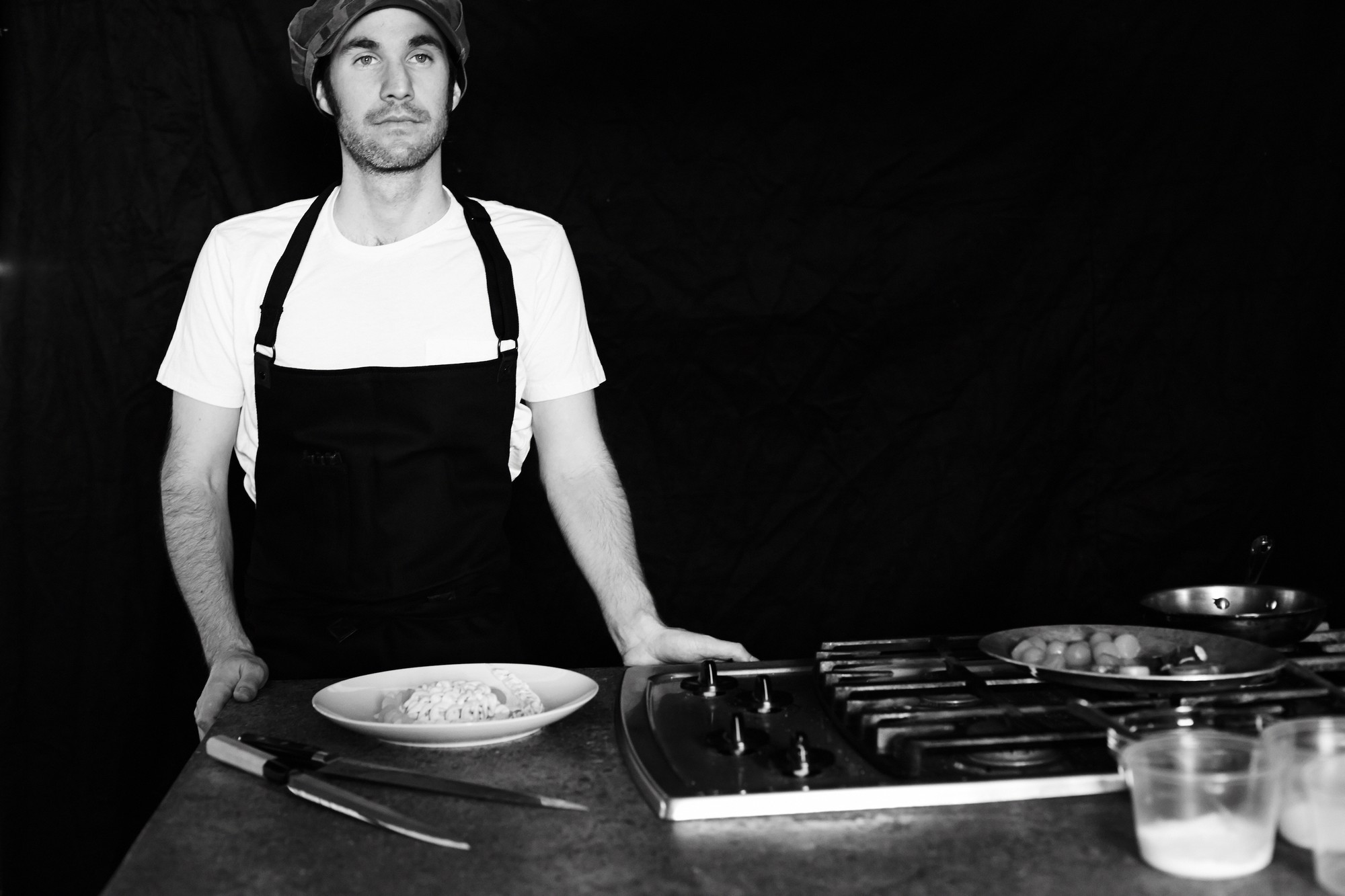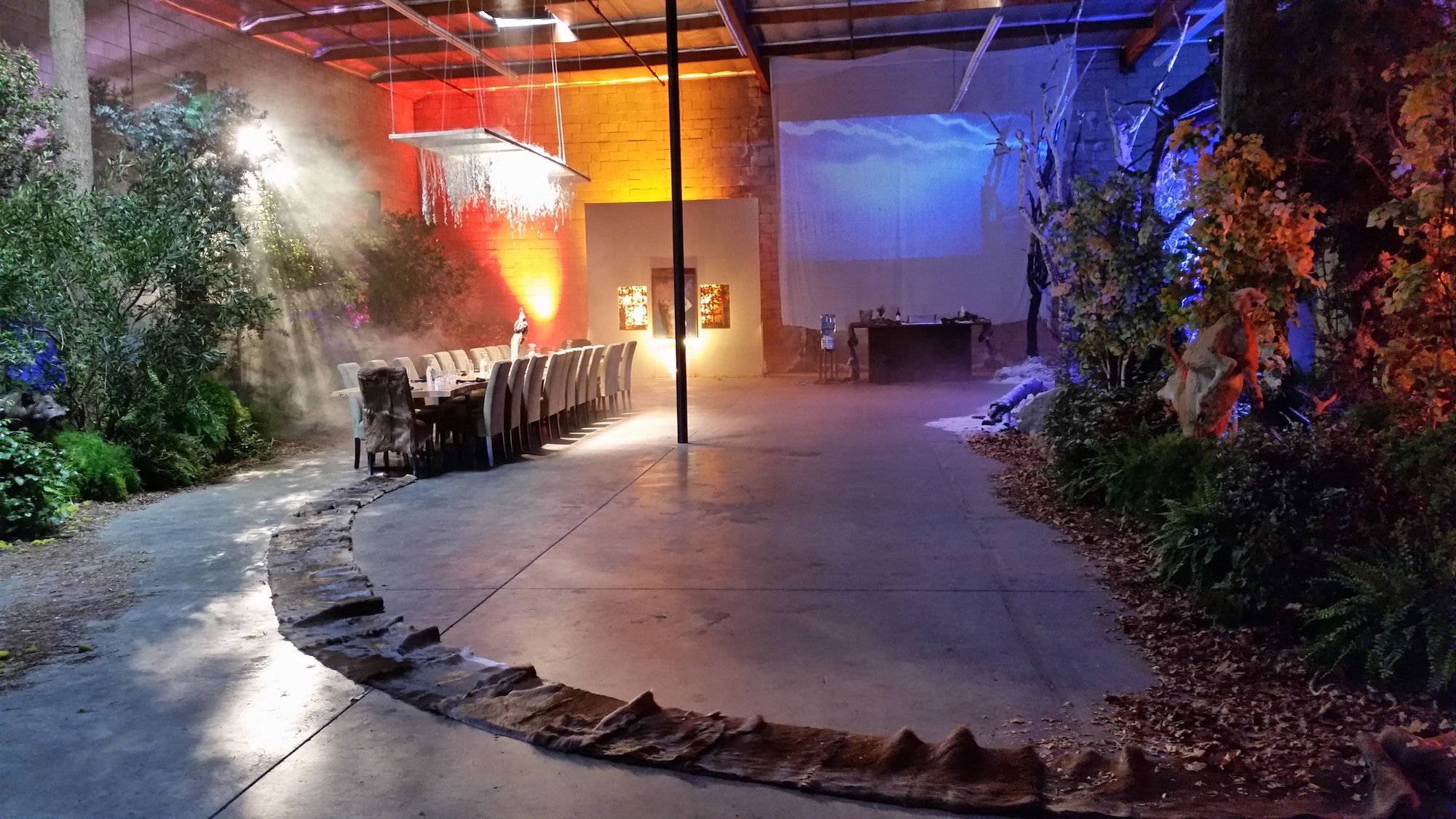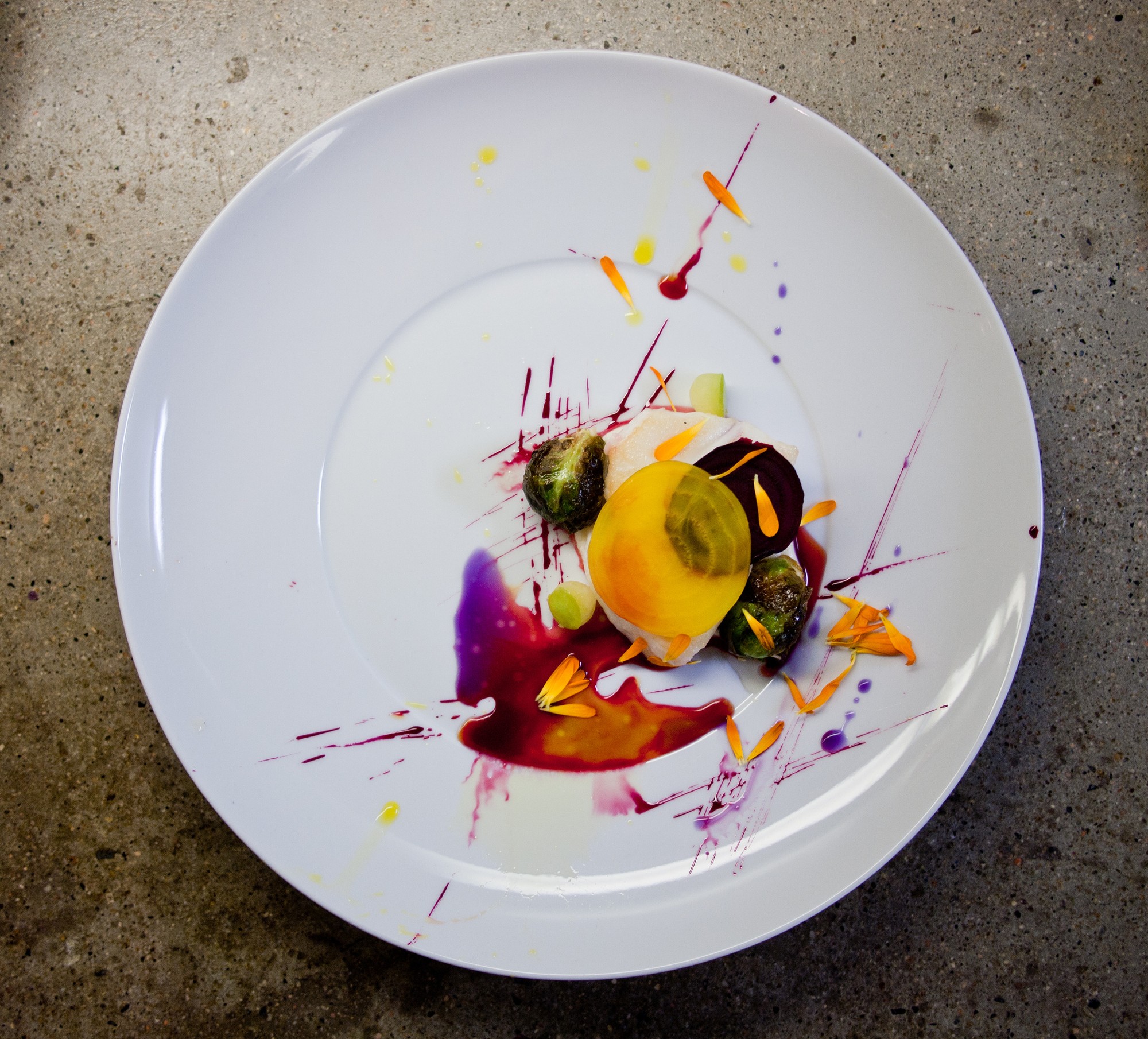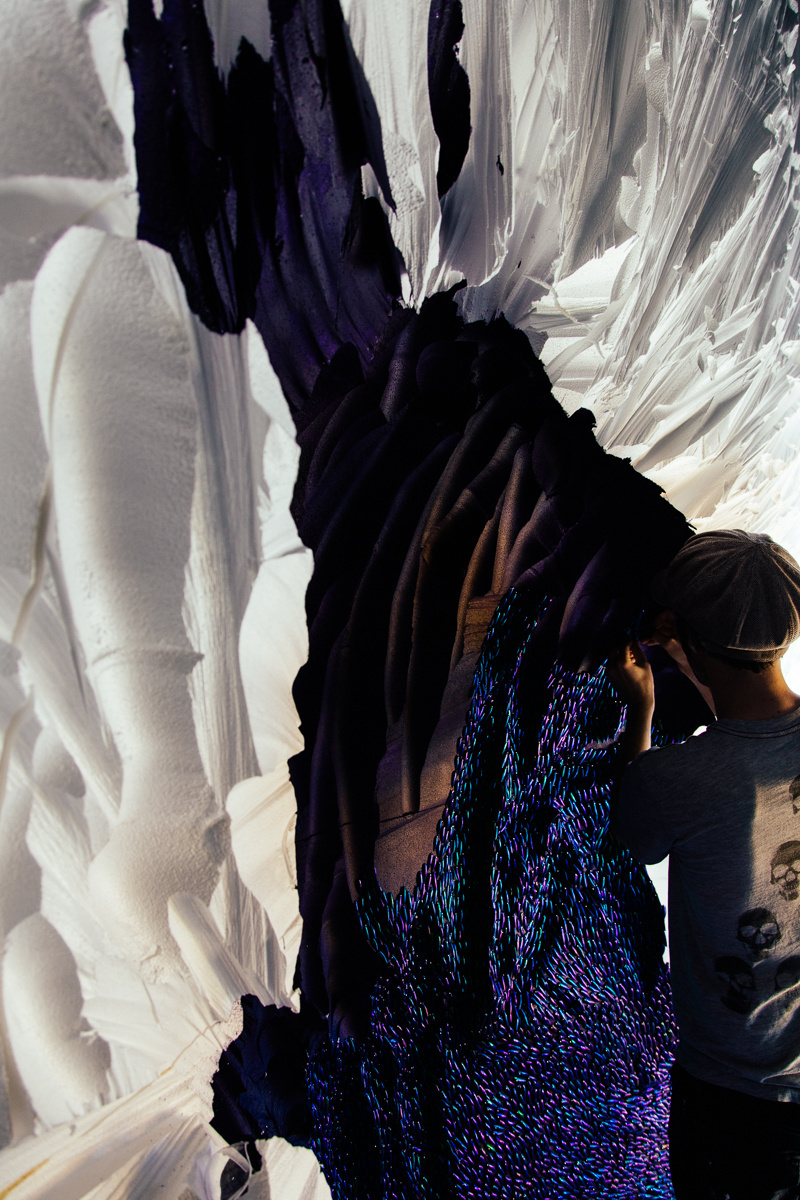When I reach Craig Thornton, he is on top of a literal ton of foam, wearing latex gloves and cutting into it with a saw so that it appears almost glacial. Below him, on the floor of the Geffen Contemporary space, his dishwasher Sam and a friend are helping to carefully pin hundreds of thousands of iridescent green beetle wings onto a slice of the synthetic material.
Though the piece is called “Leviathan”, it is a relatively small part of wolvesmouth : taxa , the total interactive experience that Thornton—the founder, chef, and self-proclaimed “wolf” behind L.A.’s long-running dinner series Wolvesmouth—will be hosting for the next five months. Another part of the installation held at the former police car warehouse in L.A.’s Little Tokyo Historic District requires that the ground be covered in coyote faces drowning in an oil slick. Thornton is an active collector of taxidermy, so sourcing these is the least of his problems; he’s more concerned with getting back and forth between the museum and his dinner space daily.
“I’ve done these kinds of art installations over the last several years, but people just never think I’m the artist,” Thornton says. “Everyone who has written about it says ‘Craig’s doing the menu for the art at MOCA.’ It’s weird and it’s frustrating. Imagine doing this kind of artwork for years and having it be discounted?”
 Thornton is equal parts chef and artist. Photo by Andrew Arthur
Thornton is equal parts chef and artist. Photo by Andrew Arthur
Thornton has always been both an artist and a chef, but his food is what has given him notoriety in Los Angeles and beyond. People come from all over the country to sit at his table, bring their own booze, and pay what they think the meal is worth—he usually breaks even, but it’s a tough business model. “We have no patrons or investors at Wolvesmouth, and I have people to pay,” he says. “I constantly have to hustle to make it happen.”
The chef has been making his own art through a series called Cut Your Teeth , working with artists like Matthew Bone and taking over spaces like the Santa Monica Museum of Art, where the MOCA first found Thornton and reached out about a collaboration. At the MOCA, unlike at Wolvesmouth dinners, the price is set: $225, with two seatings happening Thursday, Friday, and Saturday nights from March 19th through August. The theme of the exhibit is equally ambitious, tackling the broken relationship between human beings and our natural environment.
“It’s about the struggle of this god complex humans have that we just can’t admit that we have,” he says. “Most religions relegate our existence to a sort of purgatory. So it doesn’t matter if we destroy where we live, because there’s always the next place we’re going to! Because of the way we interact with the world, we create the ability to filter out anything that we don’t like, agree with, or want to be a part of.”
 A scene from one of Wolvesmouth’s Cut Your Teeth exhibits. Photo by Andrew Stuart
A scene from one of Wolvesmouth’s Cut Your Teeth exhibits. Photo by Andrew Stuart
Light fodder for a nice dinner, right? But if you start to think about it, your head spins a little. From Thornton’s view, the true scale and impact of the things we buy and eat get blurry, even disappear. Leather bags and hanger steaks are really cow skins and whole animals; religious symbols and stories are convenient reasons for bloodshed and murder. In fact, one of the dishes planned for Taxa is a riff on the Catholic tradition of transubstantiation: titled “Truncated Divinity,” it’s a lamb dish plated to look like a particularly bloody slice of flesh, with red wine and something reminiscent of bread. It’s based on Thornton’s own memories of the church ritual; as a child, he recalls thinking that he was literally drinking blood.
“Imagine killing a lamb and rubbing it on your door today? That’s a story that is celebrated in religion,” he says. “This kind of plating turns it on it’s head and just presents you with what that looks like.”
 One of Thornton’s artfully plated dishes featuring brussels sprouts, beets, and horseradish. Photo by Julian Fang
One of Thornton’s artfully plated dishes featuring brussels sprouts, beets, and horseradish. Photo by Julian Fang
The chef’s efforts have never been neatly relegated to the plate, and he has big ambitions to tackle the cycles of consumerism, religion, and technology that we all tumble through every day with this project and others in the future. However, his methods—whether building large-scale interactive art or intimate dinners—are very similar.
“When you pull back from [Taxa], you’ll see it was all part of one larger thing,” Thornton says. “It’s like making menus; each dish plays a part, but it goes into the larger idea of a tasting menu that creates the story.”
If his past work is any indication, it’s likely that the lucky diners who can snag a ticket to Taxa won’t be able to resist snapping a photo and putting an Instagram filter on it. There is a certain irony in creating work that’s critical of our collective narcissism which also triggers that impulse to filter, crop, pin beauty down like beetle wings. The thought isn’t lost on Thornton.
“A lot of the stuff I’m doing is more in response to that mentality. But I also I want people to have a good time eating the food,” he says. “With this project, I’m asking people to let me punch you in the face and then give you a massage.”
 Part of the The massive installation Thornton and his team are mounting at MOCA. Photo courtesy of Wolvesmouth
Part of the The massive installation Thornton and his team are mounting at MOCA. Photo courtesy of Wolvesmouth










